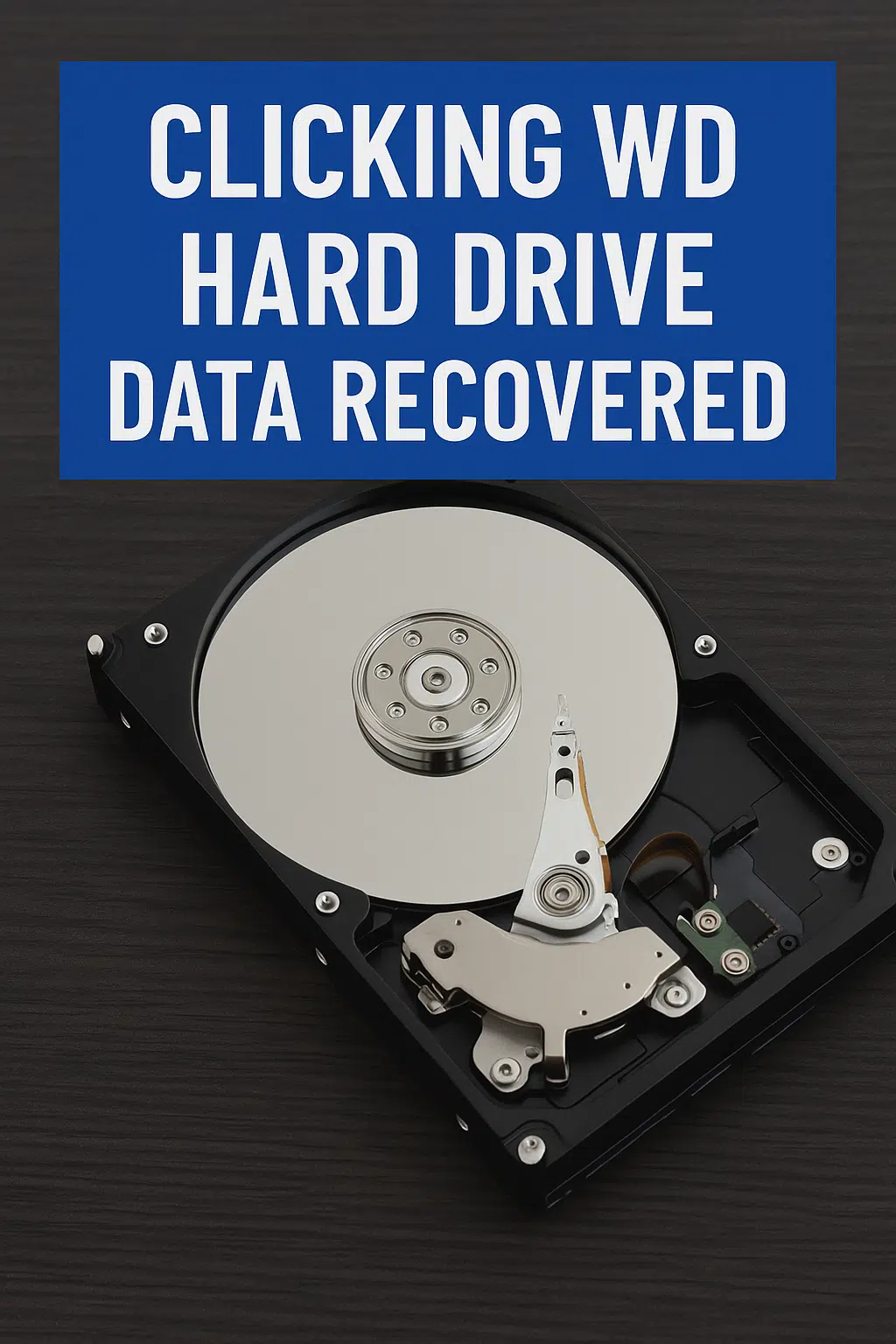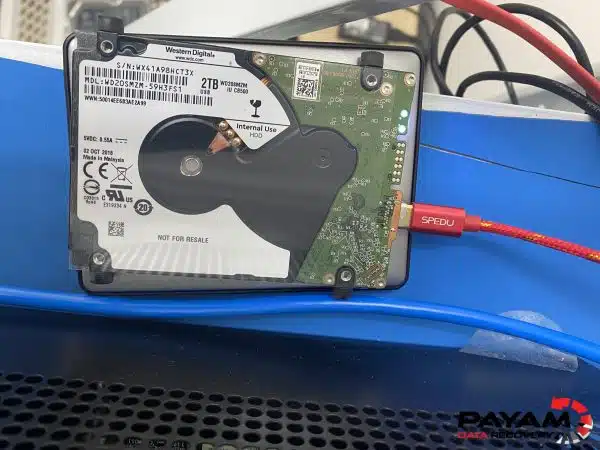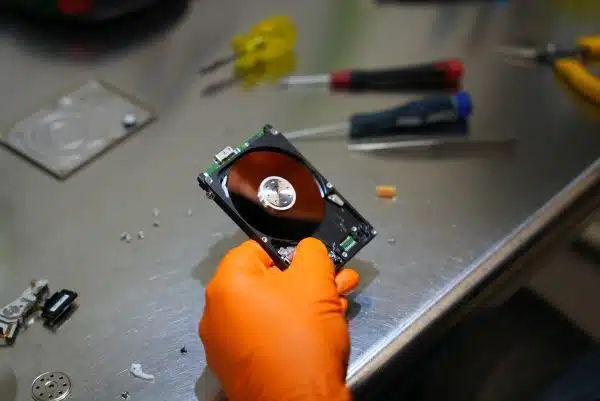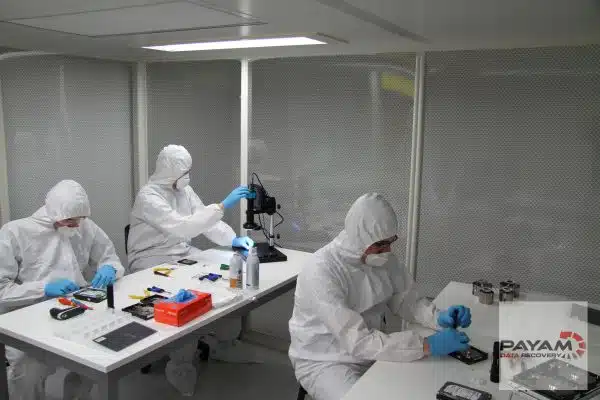Watch how we recover data from a clicking WD20NMVW in this real clicking hard drive recovery case study.
Clicking hard drive recovery requires cleanroom precision and technical skill. In this real case study, we recovered vital files from a failed WD My Passport USB drive (model WD20NMVW) for Sarah, a Sydney client. Her drive started clicking and wasn’t detected by her laptop. Years of family memories were at risk — but we brought them back safely with our expert in-lab process. Learn more about the WD My Passport series.
What Happened in This WD My Passport Recovery?
Sarah’s 2TB WD20NMVW began making a faint clicking sound and failed to mount. These symptoms pointed to damaged read/write heads. Sarah hadn’t backed up her files and feared permanent loss. She turned to our team at the Rhodes, NSW lab for WD My Passport file recovery. This is a common issue with portable Western Digital drives, especially after minor bumps or wear over time. Explore current models on Western Digital’s website.
Can a Clicking Hard Drive Be Recovered?
Yes — but only by professionals using the right tools. Clicking means internal components are failing. DIY attempts can worsen the problem. We specialise in recovering data from damaged heads using matched donor parts, firmware calibration, and precise tools like PC-3000. Sarah’s case is one of many where expert handling made all the difference.
Our Cleanroom Recovery Process for Clicking Drives
- Diagnosis: At our Rhodes lab, we confirmed damaged heads using diagnostic tools. No platter damage was present.
- Approval: Sarah reviewed and approved a recovery plan. She was relieved to hear the issue was repairable.
- Head Swap: Dmitri performed a successful head replacement inside our ISO-certified cleanroom environment using matching donor heads from another WD20NMVW.
- Firmware Calibration: We swapped the USB PCB for a SATA-compatible board and fine-tuned the firmware to stabilise the drive.
- Cloning & Extraction: Using PC-3000, we cloned the drive and extracted all her data.
Why Trust Payam for Clicking Hard Drive Recovery?
- Australia’s oldest data recovery company since 1998
- 150,000+ successful recoveries
- ISO-certified Class-100 cleanroom for safe repairs
- Real labs in 6 cities — Sydney, Rhodes, Melbourne, Brisbane, Adelaide, Perth
- No outsourcing, all work done in-house
- Specialists in WD, Seagate, Toshiba, and Samsung HDDs
Testimonial: “They recovered every single photo of my kids’ first years. I can’t thank Payam enough for saving memories I thought were lost forever.” – Sarah, Sydney NSW
Signs of a Failing Hard Drive
- Clicking or beeping sounds on startup
- Drive not detected by your computer
- Repeated reconnection attempts or slow access
- Drive spins up then stops
How to Prevent Clicking Hard Drive Failures
To minimise risk of data loss, always eject your drive safely, avoid moving it while connected, and use surge protectors. Regular backups to the cloud or another device can protect you from disaster. Drives like the WD My Passport are convenient, but they’re sensitive to impact and wear. If it clicks, act fast and seek help from cleanroom hard drive repair professionals.
Devices We Recover Like This One
- WD My Passport 2TB (WD20NMVW)
- WD Elements 1TB and 2TB
- WD Ultra USB-C 4TB
- Samsung M3 Portable
- Seagate Backup Plus Slim
Need Help with a Clicking Hard Drive?
Get a free assessment or call us at 1300 444 800. We can recover your files from clicking WD drives with cleanroom hard drive repair methods. International? Post your device from anywhere. Read real customer reviews.
Our Labs Across Australia
- Sydney: Level 11, 65 York Street, NSW 2000
- Rhodes: Ground Floor, 5 Rider Boulevard, NSW 2138
- Melbourne: Level 11, 456 Lonsdale Street, VIC 3000
- Brisbane: Level 10, 95 North Quay, QLD 4000
- Adelaide: Level 30, 91 King William Street, SA 5000
- Perth: Level 28, 140 St Georges Terrace, WA 6000
Real engineers. Real labs. Real results.




